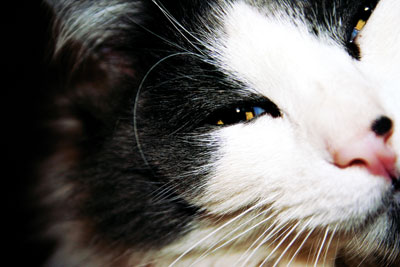All Nonfiction
- Bullying
- Books
- Academic
- Author Interviews
- Celebrity interviews
- College Articles
- College Essays
- Educator of the Year
- Heroes
- Interviews
- Memoir
- Personal Experience
- Sports
- Travel & Culture
All Opinions
- Bullying
- Current Events / Politics
- Discrimination
- Drugs / Alcohol / Smoking
- Entertainment / Celebrities
- Environment
- Love / Relationships
- Movies / Music / TV
- Pop Culture / Trends
- School / College
- Social Issues / Civics
- Spirituality / Religion
- Sports / Hobbies
All Hot Topics
- Bullying
- Community Service
- Environment
- Health
- Letters to the Editor
- Pride & Prejudice
- What Matters
- Back
Summer Guide
- Program Links
- Program Reviews
- Back
College Guide
- College Links
- College Reviews
- College Essays
- College Articles
- Back
A New Kind of Communication
KT Hart is titled as an animal behaviorist, trainer, and most importantly a communicator. She has had more years’ experience than she would like to admit. She was born with the special gift of being able to communicate with animals, in her younger years she believed everyone communicated with animals, so it was her normal. Ten years passed before she realized that not everyone could communicate with animals. KT Hart grew up with dogs, cats, and horses. A few years after she turned eighteen and moved away from her parents, she decided to go into the movie business as an animal trainer. She worked with just about every animal you can think of. Bears, wolves, tigers, snakes, foxes, dogs, cats, horses, zebras, and many more all became her newfound friends; now old friends.
“Behaviorists are really mastering an art form, an art form of understanding and recognizing the
behaviors of animals.” Hart said when asked the question of what are behaviorists. An animal
behaviorist is described as the study of the behavior of animals. The whole idea of an animal
behaviorist is to discover what causes different types of behavior and what factors can be
changed to promote a behavior change. It’s really rather similar to raising a child, although there
isn’t nearly as much work involved, and animals are usually more willing to change than humans
are. Although a behaviorist is not limited to only the study of dogs or cats or domesticated
animals, they often work with exotic animals, sometimes in zoos. Most behaviorists specialize in
certain types of animals, some choose marine mammals, some choose livestock, some choose
domesticated animals, some choose exotic animals, and very few choose them all. Hart was one of those rare few that decided to include all animals in her life as a behaviorist. There are
countless things that can affect how an animal behaves, these variables include the following;
diet, hunger, illness, hormones, the weather, living environment and of course the presence of a possible predator in the area.
“There are many different kinds of animal training. It’s hard to sum it up into one sentence.
There’s obedience training, movie training which consists of tricks mostly but it’s not in any way
easy, and of course there is also protection training which is implemented for all police dogs.
There’s also therapy dog training and service dog training which both have numerous uses.
Therapy dogs are often brought to hospitals, or special education class, or elderly home to
comfort the people residing there. Service dogs provide a service to their owner, whether that’s
telling a diabetic that their insulin levels are dangerously low, or a mobility dog to help stabilize
an unsteady person.” Hart explained during an interview when the question of what is an animal
trainer. One type of animal training is called obedience and it consists of teaching animals to
behave themselves in a polite manner no matter the situation or location. For the dogs that tear up your sofa, or jump on the counters, or even try to bite you if you take a toy away, obedience
training is definitely the way to go. Your dog will follow your every command and there will not
be any more issues, provided the owner follows the directions of the animal trainer. Another
form of animal training is the infamous movie dog training. Training animals for the movies is a
lot more work than most people believe it to be. Doing a scene such as having a dog nudge the
dog food bowl is a lot more complicated than you would think. First you have to teach the dog to
go to a mark which is a way of having the dog work away from you. The trainer can’t very well
guest star alongside the dog in every scene. Then you have to teach the dog to nudge a bowl,
bowls are usually steel which makes them cold and quite frankly most dogs don’t want to touch a cold surface with their nose. Training a trick like this can take as short as a week, but as long as three or four months, depending on how willing the dog is.
Hart describes her communication with animals as “a series of images” the flash through her
brain when an animal decides to open up to her. She says it’s not the same as communication
with humans; humans can be more secretive, and often deceptive. She has continued to develop the same skill with humans, although some are more “open and consciously awake” than others making them easier to read.
KT Hart is a renowned animal behaviorist, trainer and holds within herself the special ability of
animal communication. Hart proves the impossible possible, she redefines communication on all
levels with humans and animals.

Similar Articles
JOIN THE DISCUSSION
This article has 0 comments.
